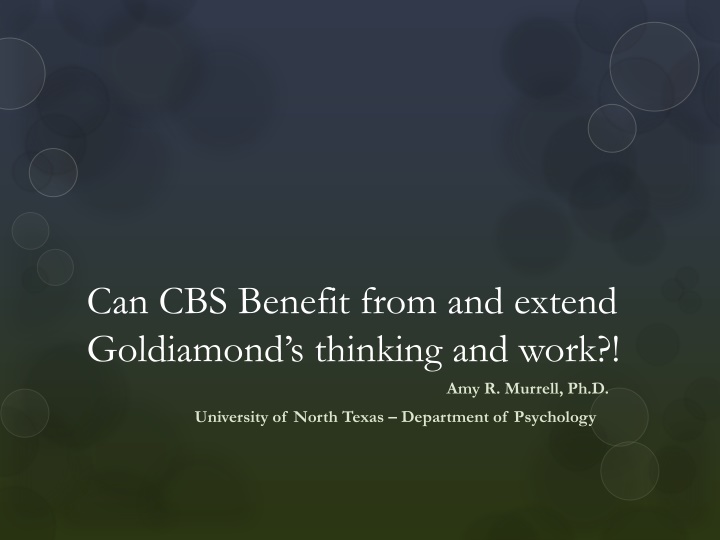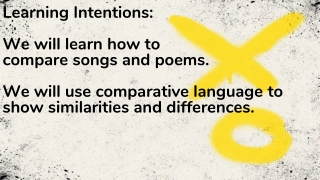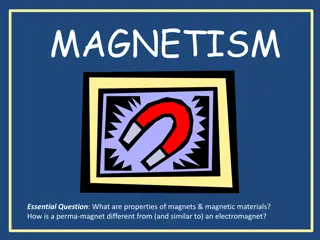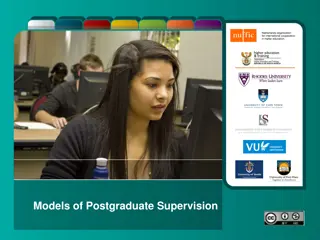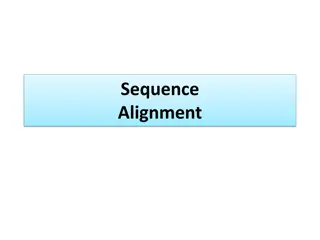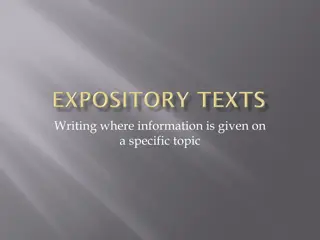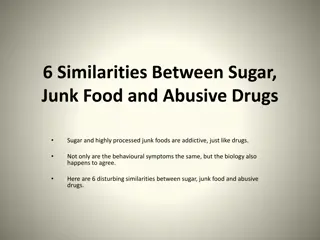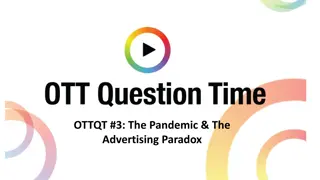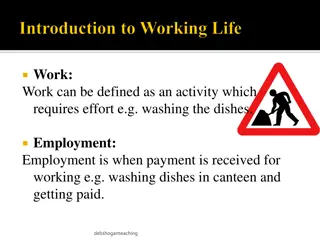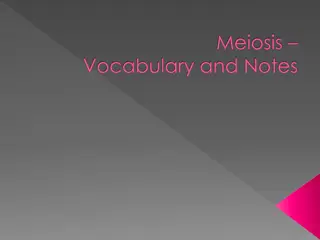Exploring the Similarities Between Goldiamond's Work and CBS Approaches
Israel Goldiamond's work in professional development, ethics, and behavior analysis shows similarities with CBS approaches, emphasizing contextual factors, functional analyses, and long-term goals. Both approaches focus on understanding behavior within its context and promoting positive change through shifting contextual contingencies. These shared principles highlight the potential for CBS to benefit from and extend Goldiamond's thinking and work.
Download Presentation

Please find below an Image/Link to download the presentation.
The content on the website is provided AS IS for your information and personal use only. It may not be sold, licensed, or shared on other websites without obtaining consent from the author.If you encounter any issues during the download, it is possible that the publisher has removed the file from their server.
You are allowed to download the files provided on this website for personal or commercial use, subject to the condition that they are used lawfully. All files are the property of their respective owners.
The content on the website is provided AS IS for your information and personal use only. It may not be sold, licensed, or shared on other websites without obtaining consent from the author.
E N D
Presentation Transcript
Can CBS Benefit from and extend Goldiamond s thinking and work?! Amy R. Murrell, Ph.D. University of North Texas Department of Psychology
Israel Goldiamond (* what I can tell from reading his work & things written about him) Worked in multiple settings widely relevant to professional development Both basic and applied work President of ABA in early 1970s Editor of many journals relevant to behavioral research and treatment Argued for the role of scientists in social responsibility and ethical matters Involved in organizational meetings devoted to such issues Included himself as scientist and clinician in his writings Conducted detailed, technical, careful (and at times quite lengthy) analyses Wrote in similar ways And yet, work is quite easily understandable if take time to read it Seems to be a staunch advocate maybe even to point of being contrary But, at least in writing, never seemed to be self-aggrandizing or antagonistic about work Always wrote things like: this is only one way, there are limits to prediction and influence, cites people from far discrepant fields, specifically mentions other models and their benefits, no us-them in any thing I ve read
And, Jesus R. said tell me how this ACT stuff isn t just Izzy Goldiamond s work There is certainly a basic to applied bridge that going for in the constructional approach that is very familiar to the CBS community In both, this often has to do with language There is a recognition in both approaches that the context(s) within which behavior occurs is important - and that behavior that formally looks negative serves (a) useful function(s) such that shifting contextual contingencies is seen as an effective way to address behavior (as opposed to labeling it, attempting to directly manipulate private content, etc.) There is a related recognition of aversive control having downsides in both As well as an idea about shaping up existing behavioral repertoires start where client is and build to more desired functioning levels/behaviors Each use specific tools to do functional analyses and to help clients or their significant others do the same in their daily lives
More compare and contrast In each approach, there is an emphasis, therefore, on long-term self- selected goals (or values) to guide the process In each approach, there is a awareness of how important it is to attend to contingencies in the moment pure discrimination and also alternative responses (contact with the present moment) This is especially important for verbal behavior because may realize a shift but not say it Use of metaphor to generalize content is much like RFT transformation (potentiating variables and establishing operations) Symptoms and alternatives - costs and benefits (acceptance and defusion) Are references to other pieces of hexaflex too, actually
How can use this work to expand? I think may not have caught on because detailed, long, cautious, etc. I see big potential in training and dissemination Studies were rate of speech and affect were conditioned Talk about this a lot in ACT and FAP but not a whole lot of this gets out there
